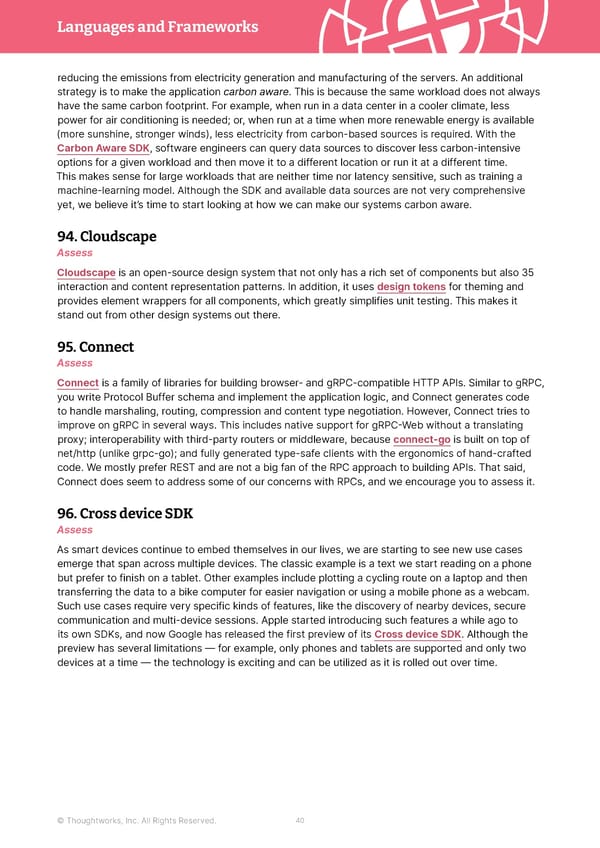Languages and Frameworks Thoughtworks Technology Radar reducing the emissions from electricity generation and manufacturing of the servers. An additional strategy is to make the application carbon aware. This is because the same workload does not always have the same carbon footprint. For example, when run in a data center in a cooler climate, less power for air conditioning is needed; or, when run at a time when more renewable energy is available (more sunshine, stronger winds), less electricity from carbon-based sources is required. With the Carbon Aware SDK, software engineers can query data sources to discover less carbon-intensive options for a given workload and then move it to a different location or run it at a different time. This makes sense for large workloads that are neither time nor latency sensitive, such as training a machine-learning model. Although the SDK and available data sources are not very comprehensive yet, we believe it’s time to start looking at how we can make our systems carbon aware. 94. Cloudscape Assess Cloudscape is an open-source design system that not only has a rich set of components but also 35 interaction and content representation patterns. In addition, it uses design tokens for theming and provides element wrappers for all components, which greatly simplifies unit testing. This makes it stand out from other design systems out there. 95. Connect Assess Connect is a family of libraries for building browser- and gRPC-compatible HTTP APIs. Similar to gRPC, you write Protocol Buffer schema and implement the application logic, and Connect generates code to handle marshaling, routing, compression and content type negotiation. However, Connect tries to improve on gRPC in several ways. This includes native support for gRPC-Web without a translating proxy; interoperability with third-party routers or middleware, because connect-go is built on top of net/http (unlike grpc-go); and fully generated type-safe clients with the ergonomics of hand-crafted code. We mostly prefer REST and are not a big fan of the RPC approach to building APIs. That said, Connect does seem to address some of our concerns with RPCs, and we encourage you to assess it. 96. Cross device SDK Assess As smart devices continue to embed themselves in our lives, we are starting to see new use cases emerge that span across multiple devices. The classic example is a text we start reading on a phone but prefer to finish on a tablet. Other examples include plotting a cycling route on a laptop and then transferring the data to a bike computer for easier navigation or using a mobile phone as a webcam. Such use cases require very specific kinds of features, like the discovery of nearby devices, secure communication and multi-device sessions. Apple started introducing such features a while ago to its own SDKs, and now Google has released the first preview of its Cross device SDK. Although the preview has several limitations — for example, only phones and tablets are supported and only two devices at a time — the technology is exciting and can be utilized as it is rolled out over time. © Thoughtworks, Inc. All Rights Reserved. 40
 Vol 27 | Technology Radar Page 39 Page 41
Vol 27 | Technology Radar Page 39 Page 41